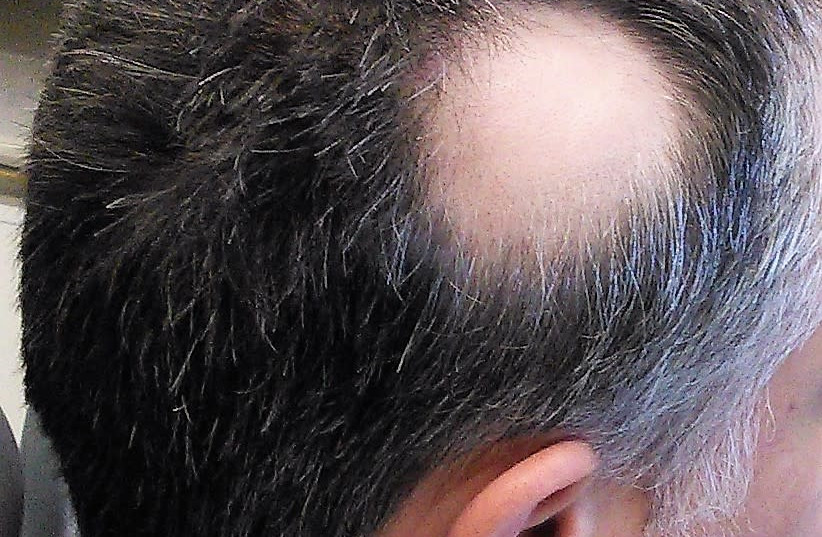Hair loss (or alopecia) can be temporary or permanent. Both women and men can experience it, though it is more common for the latter. People normally lose between 50 to 100 scalp hairs per day, according to multiple sources.
It should be stated that getting a haircut does not accelerate hair growth, according to Clalit.
What are the causes of hair loss?
Hair loss can be a direct result of just normal aging, but can also be caused by hormonal changes or family history and genetics, Mayo Clinic lists.
Another cause is Telogen effluvium, which happens a few months after major body stress such as illness, surgery or infection, according to Harvard Health Publishing. One example would be women after giving birth to suddenly lose hair.
What are the symptoms of hair loss?
Symptoms that you're experiencing hair loss if you notice patchy bald spots or gradual thinning on top of your head and sudden loosening of hair, which can happen when combing or washing your hair.

Patches of scaling over the scalp are another symptom that is a result of broken hair, redness or swelling. One more symptom is generally thinner hair, according to Harvard Health.
What are the risk factors that may lead to hair loss?
As aforementioned with the cause of hair loss, a family history of balding is considered to be a risk factor for hair loss. Age, losing weight quickly, stress and poor nutrition are also factors.
How do you prevent hair loss?
Mayo Clinic recommends being gentle with your hair. Do not tug on your hair when brushing or combing it when it is wet.
As implied with the risk factors of hair loss, preventions include minimizing stress, a healthy diet and finding medications whose side effects do not include the loss of hair, Harvard Health states. Another recommendation is to not share your hats, combs or brushes with others.
Clalit Health Services states that they do not recommend dying your hair if you want to not have it all out. Repeated exposure to dyes can damage the scalp and even cause inflammatory conditions that will even lead to scarred baldness. Protecting your hair from sunlight and not smoking are also helpful, according to both Clalit and Mayo Clinic.
How do you diagnose hair loss?
The most efficient way to diagnose hair loss is by consulting with a doctor, who would then likely give you a physical exam, according to Mayo Clinic.
Whether you are officially diagnosed or not is something your doctor will have to determine based on your diet, how you take care of your hair, family history, also running blood tests and scalp biopsy. Your doctor may even just will several dozen hairs from your head to see how much comes out.
How do you treat hair loss?
Treatment for hair loss can either be reversed or slowed down, Mayo Clinic says. There are cases such as having patchy hair where you can regrow it without requiring treatment. Harvard Health Publishing revers to patchy hair loss as Tinea capitis.
If you're losing hair as a result of a disease, medications include:
- Minoxidil - comes in liquid, foam and shampoo forms; on a daily basis, women should use it once and men twice. The regrowing process may take at least half a year.
- Finasteride (Propecia) - a prescription drug exclusively for men that would be taken daily as a pill. It may take a few months to see if it works.
- Other options include hair transplant surgery or laser therapy.
